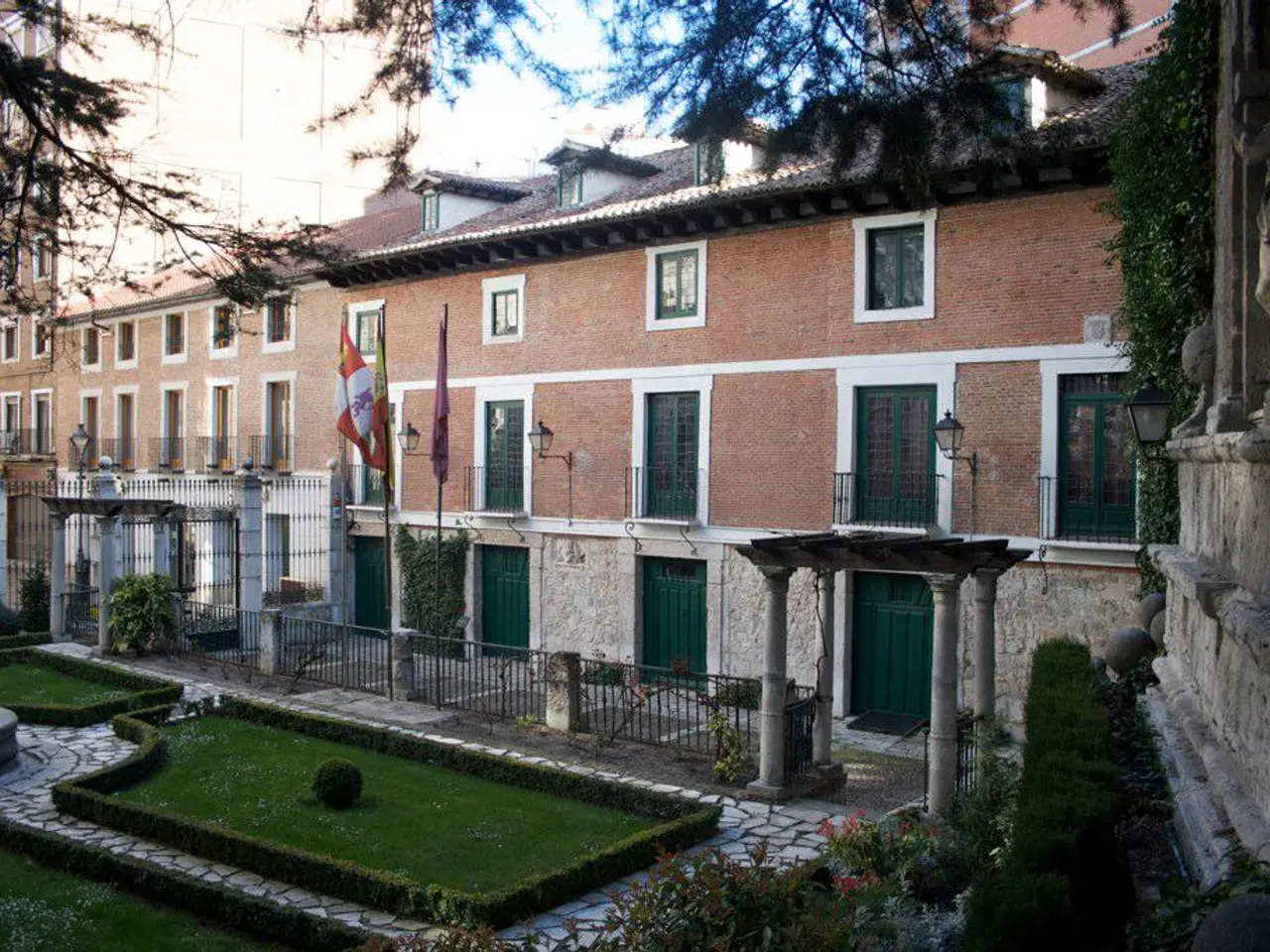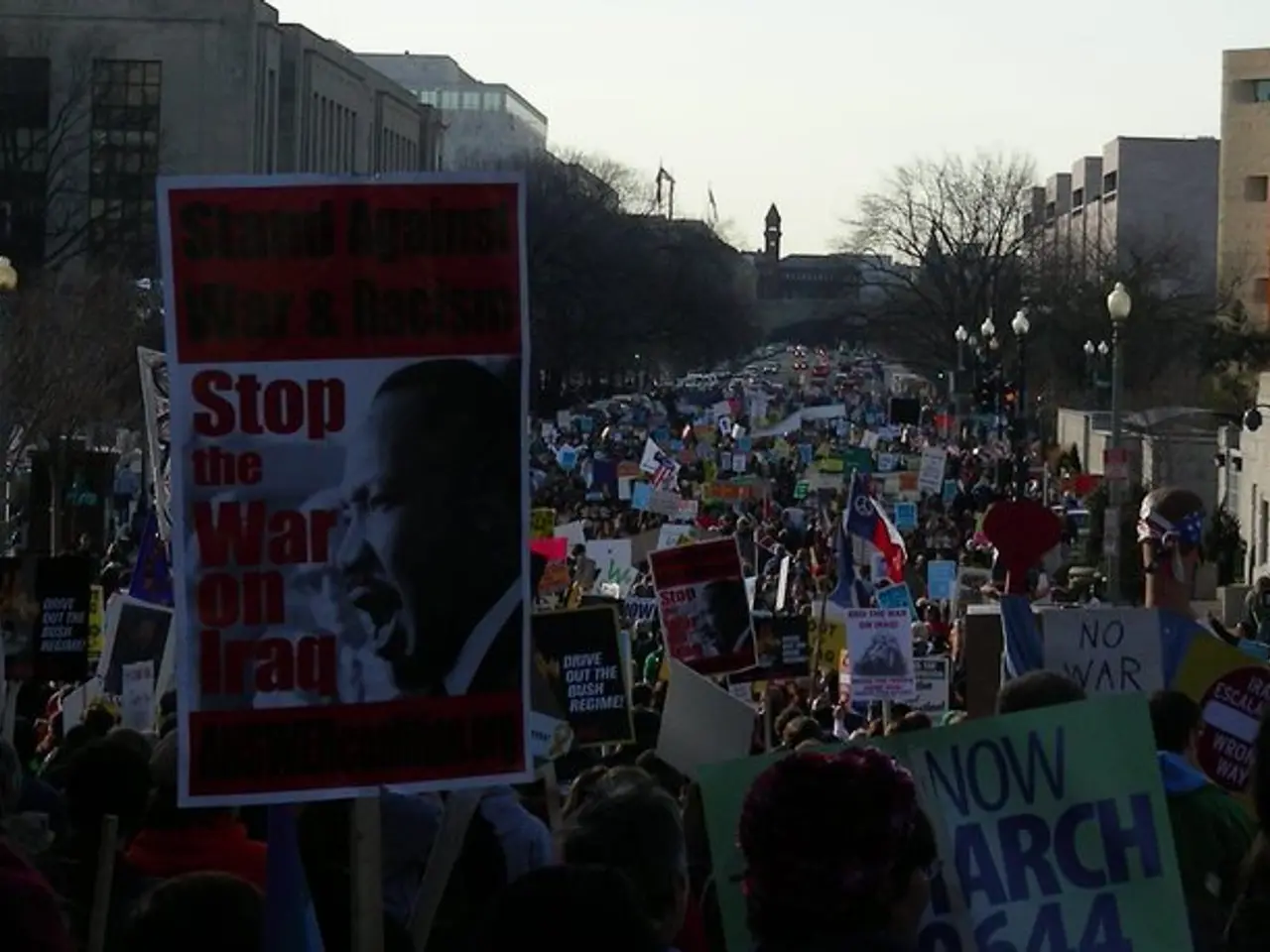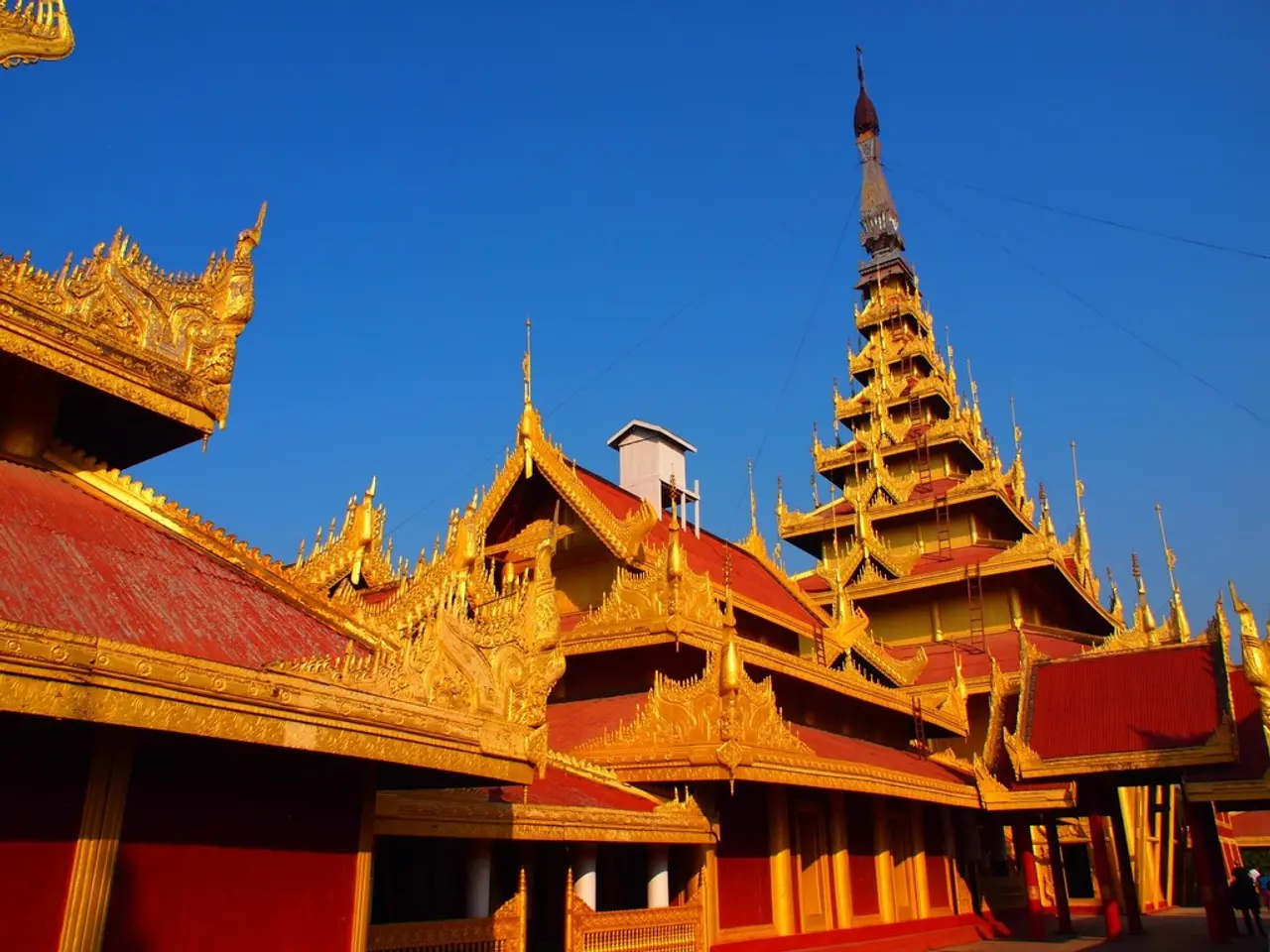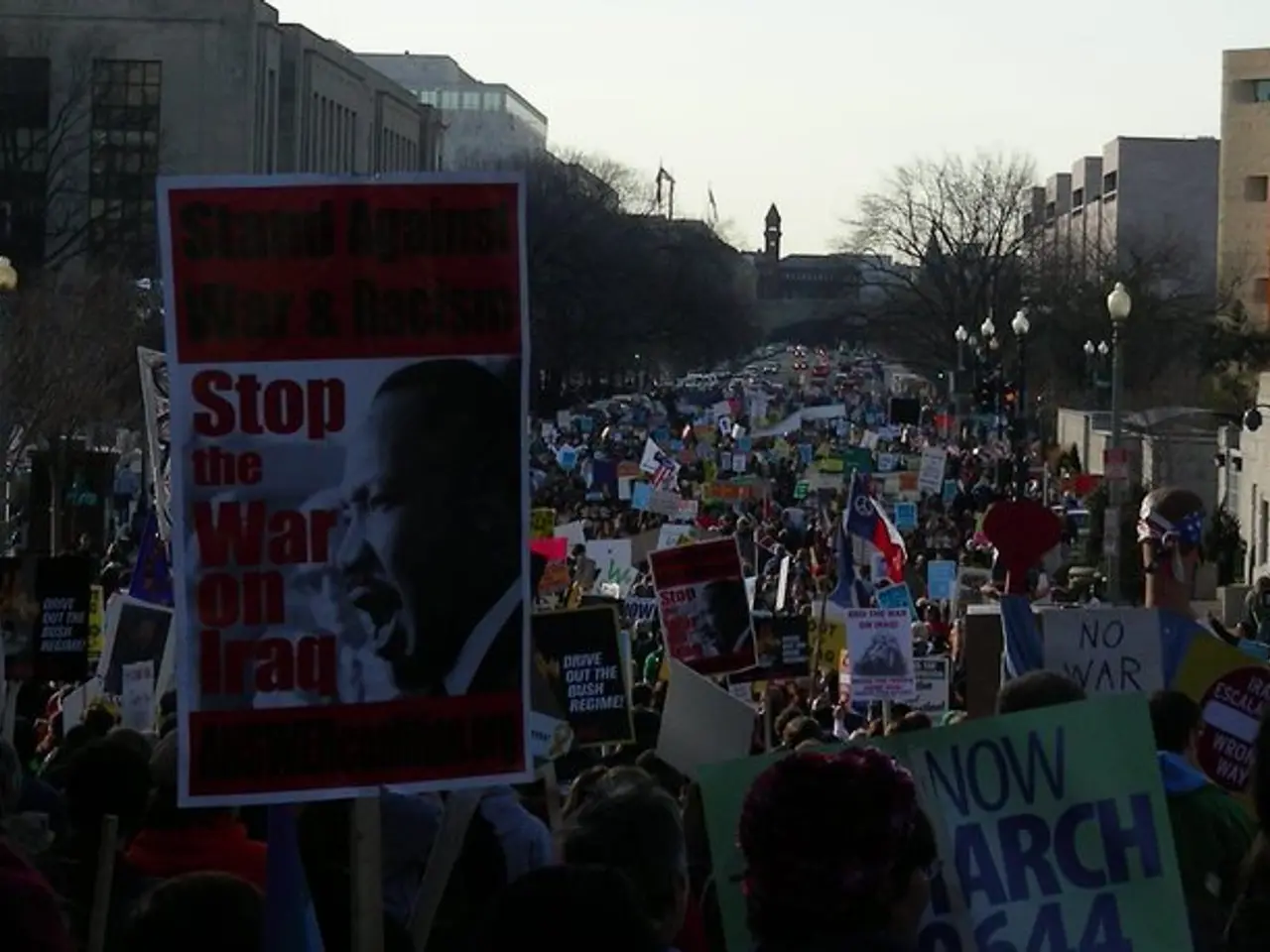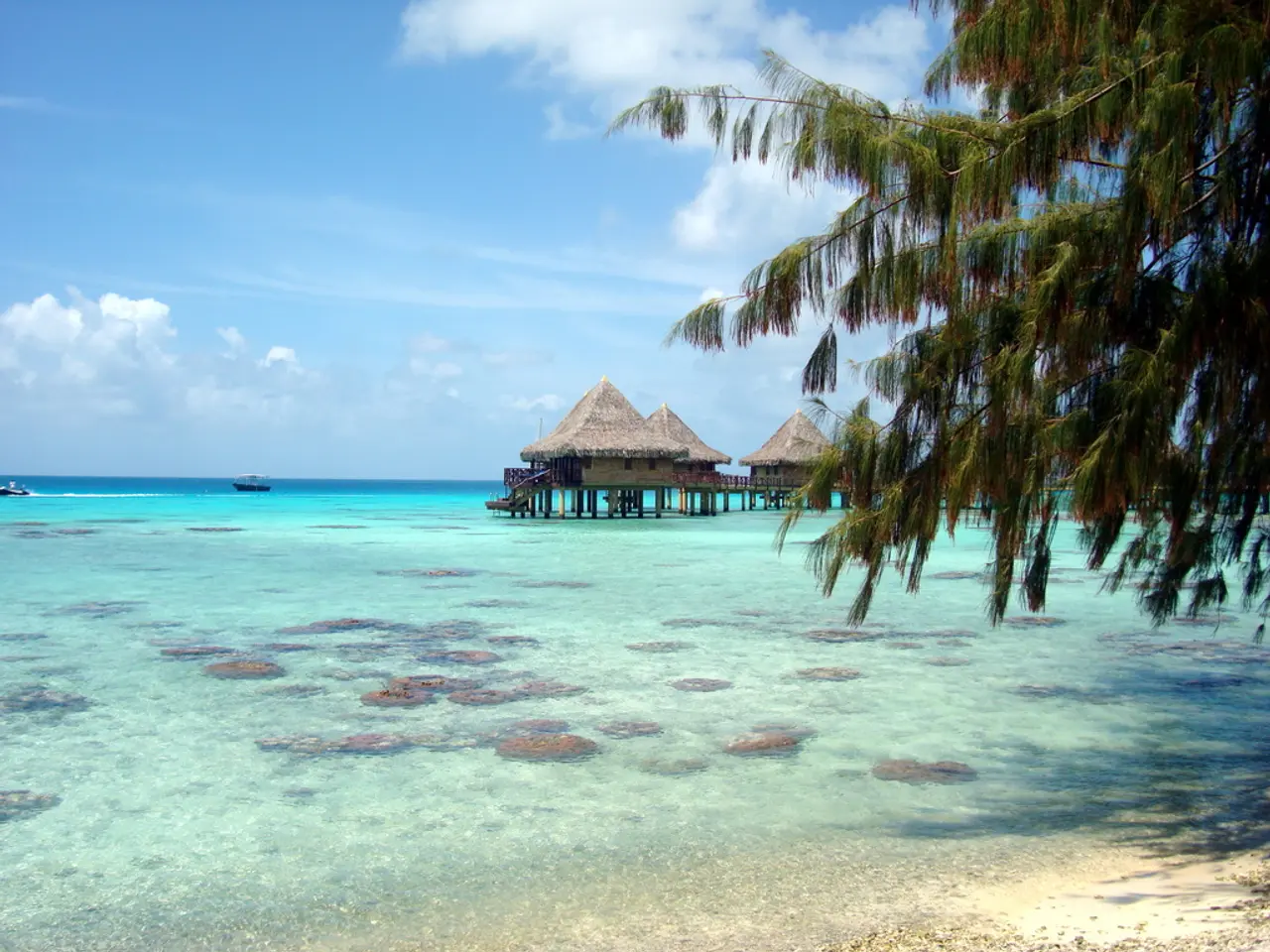Account of Two Barricades
The Great Green Wall (GGW), an African-led initiative, is a monumental conservation project spanning 4,000 miles from Senegal in the west to Djibouti in the east. This ambitious project aims to combat desertification, climate change, and socio-economic challenges across the Sahel and Horn of Africa [1][2][4].
In Senegal, the GGW is making a notable impact. Racine Diallo, technical director of Senegal's Great Green Wall Agency, describes the project as a form of resilience. Extensive consultation with communities is crucial before a single tree is planted, ensuring local buy-in and sustainable growth [3].
Activities in Senegal began in 2009 and expanded eastwards to reach Mboula by 2012. The reforestation drive has focused on tree species such as acacia and baobab, concentrated in parcelles. These parcelles act like a reservoir of animal feed for the months when most vegetation is gone, providing a vital lifeline for herders [4].
Moussa Sy, a member of the semi-nomadic Fulani people in Senegal, decided to participate in the GGW project in 2012. Sy remembers the droughts of the 1970s and '90s, when the rains never came and many animals died due to lack of food. Today, Sy can stay put year-round, tending to a five-hectare garden with 200 other women, thanks to the GGW [5].
The benefits of contributing to the GGW in Senegal have gone beyond the pursuit of holding back the desert. Maimouna Sene, head of the women's association of the community of Mboula, sells what she grows, providing income for her family, while the gardens deliver better nutrition for their families. The project has allowed some of the world's poorest people to thrive and innovate, preparing the next generation for a better life [6].
The GGW project is not without its challenges. The project faces hurdles including insecurity in conflict-prone zones, limited water resources in arid areas, complex coordination among many stakeholders, and funding gaps. Completing the entire GGW will cost an estimated $33 billion; a 2021 accelerator initiative pledged $14.3 billion, but only $2.5 billion had been disbursed as of early 2023 [2].
Despite these challenges, the GGW is delivering significant environmental, social, and economic benefits. It is improving fertile land, food security, water security, and community wellbeing. It also contributes to increased renewable energy potential and provides green jobs, helping reduce migration pressures and build climate resilience in one of the poorest and most climate-vulnerable regions on Earth [1][4].
The project is described as building the largest living structure on Earth, shifting global perceptions of the Sahel from crisis to opportunity and resilience. The UN Convention to Combat Desertification (UNCCD) plans to release a comprehensive report on GGW status and future directions in September 2025, which will provide updated progress data and strategic insights [5].
While the Great Green Wall is far from complete, it has already demonstrated the potential of large-scale, African-led ecological restoration to tackle desertification, climate vulnerabilities, and conflict. However, sustained financing, enhanced coordination, and conflict-sensitive implementation remain critical to fully realize its ambitious vision.
References:
- UNCCD. (2021). Great Green Wall Initiative: Progress, Challenges and Opportunities. Retrieved from https://www.unccd.int/sites/default/files/2021-03/GGW%20Progress%20Challenges%20and%20Opportunities%20Report%202021_0.pdf
- World Bank. (2021). The Great Green Wall Initiative: An Update on Progress and Challenges. Retrieved from https://www.worldbank.org/en/topic/climatechange/publication/the-great-green-wall-initiative-an-update-on-progress-and-challenges
- The Guardian. (2020). The Great Green Wall: Africa's last great hope for the planet. Retrieved from https://www.theguardian.com/environment/2020/mar/04/the-great-green-wall-africas-last-great-hope-for-the-planet
- The Conversation. (2021). The Great Green Wall: Africa's ambitious project to combat climate change. Retrieved from https://theconversation.com/the-great-green-wall-africas-ambitious-project-to-combat-climate-change-156324
- UNCCD. (2021). Great Green Wall Initiative: Progress Report 2020. Retrieved from https://www.unccd.int/sites/default/files/2021-03/GGW%20Progress%20Report%202020_0.pdf
- The New York Times. (2019). A Desert Project in Africa, and a Model for the World. Retrieved from https://www.nytimes.com/2019/12/18/climate/great-green-wall-africa.html
- The Great Green Wall in Senegal, a key component of the African-led initiative, is being hailed as a cultural and environmental beacon, blending art and science to combat climate change and bring about social and economic revitalization.
- The monthly sale of agricultural produce from Maimouna Sene's garden in Mboula, Senegal, not only provides general news on the thriving local community but also offers a glimpse into the economic benefits and cultural relevance of the environmental-science-oriented Great Green Wall project.
- Moussa Sy, a proud participant in the Great Green Wall project, experiences improved climate resilience and demonstrates the political significance of community-focused environmental conservation in the Sahel region.
- Magazine articles frequently highlight the Great Green Wall project as a living example of how culture and science can work together to address climate-change related challenges such as desertification, drought, and soil erosion across various African biomes.
- Despite its costs and the complexities associated with competing priorities like conflict, water resources, and coordination among various stakeholders, the Great Green Wall project continues to command attention as a pioneering example of large-scale, African-led ecological restoration and an opportunity for international collaboration in climate-change mitigation.
